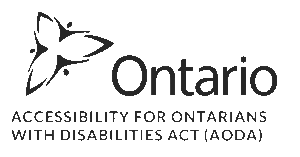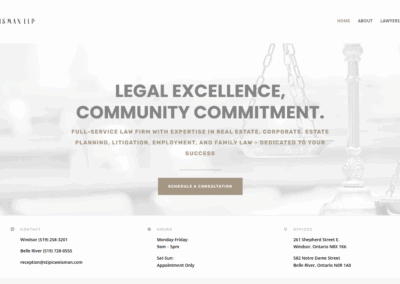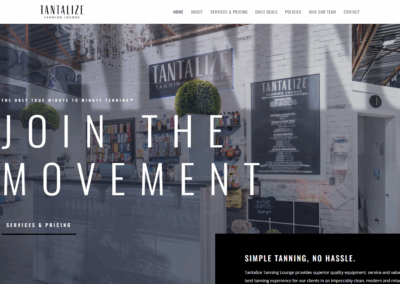Website Accessibility Compliance Services.
Accessible and Inclusive website design
Ensuring Inclusivity and Legal Adherence.
Web accessibility ensures that websites can be used by all individuals, including those with disabilities. This means our web content should be perceivable, operable, understandable, and robust.
Understanding Website Accessibility
Perceivable content is content that users can see or hear. We must provide text alternatives for non-text content. For example, images should have descriptive alt text. Audio and video require captions or transcripts.
Operable content is content that users can navigate and interact with. Our websites should be navigable using various input methods such as a keyboard, mouse, or voice commands. For instance, all buttons must be clickable via keyboard shortcuts.
Understandable content is easy to read and navigate. We should use simple language, clear instructions, and consistent navigation methods. This helps all users, especially those with cognitive disabilities, to process our web content effectively.
Robust content works across different browsers and devices, both now and in the future. This means using well-established web standards to ensure compatibility. For example, HTML and CSS should be used according to W3C recommendations.
Assistive technologies like screen readers and voice recognition software, enable users with disabilities to interact with our web content. By supporting these technologies, we make our website more accessible.
Designing for Accessibility.
WHAT WE OFFER
When designing websites for accessibility, it’s crucial to address various aspects such as navigability, alternative formats, and user experience. This helps ensure that our websites can be accessed and used by everyone, including people with disabilities.
Web Content Accessibility Guidelines (WCAG)
The WCAG, developed by the Web Accessibility Initiative, provides a set of technical standards for making web content accessible. These guidelines are divided into three levels: Level A, Level AA, and Level AAA. WCAG 2.0 was published in 2008, followed by WCAG 2.1 in 2018 and WCAG 2.2 in 2023. Each level builds on the previous one, making compliance progressively more inclusive.

Accessible Canada Act (ACA) and Accessibility for Ontarians with Disabilities Act (AODA)
The Accessible Canada Act (ACA), enacted in 2018, promotes web accessibility across federal domains. Organizations must adhere to compliance timelines specified by the act. The Accessibility for Ontarians with Disabilities Act (AODA), specific to Ontario, requires businesses with 20 or more employees to file accessibility compliance reports every three years. Both of these acts aim to remove barriers and ensure accessibility for all Canadians.
Accessibility in Design
Incorporating accessibility starts with knowing and applying Web Content Accessibility Guidelines (WCAG).
We should add alternative text for images. This helps screen readers convey the message of the image to users who can’t see it. Including ARIA (Accessible Rich Internet Applications) roles can define elements like buttons, navigation bars, and alerts to improve interaction for screen readers.
Color contrast is another key area. We should ensure that text and backgrounds differ enough to be easily readable. For example, using dark text on a light background or vice versa meets the WCAG requirement of a contrast ratio of at least 4.5:1 for normal text.
Navigation and Functionality
Navigation on our websites should be simple and functional for everyone. This includes users who rely on keyboard navigation. All interactive elements must be accessible via keyboard shortcuts, offering an alternative to mouse-based navigation.
We should use clear and descriptive headings and labels to guide users through the content. For example, each page should have an H1 heading that clearly describes its purpose, with subsequent headings structured logically.
Including error messages that clearly explain what went wrong and how to fix it can greatly help users with cognitive disabilities. For instance, if a form field is incorrectly filled out, provide a descriptive error message next to the field to guide the user.
Content and Alternative Formats
Captioning and transcripts for videos ensure that users with auditory impairments can access the information. For multimedia content, offering audio descriptions helps those who can’t see the video.
Text should be created with simple language and short sentences to aid users with cognitive disabilities. Offering documents in multiple formats, such as PDFs and accessible HTML, ensures better access.
Alternative text is essential for all images. If we have an image of a chart, the alternative text should describe the chart’s key data points. This way, users who cannot see the image still get the crucial information.

OUR ADVANTAGES
Why Partner with Pivot for Your Web Design Needs?
We're different than the bigger guys
Unlike larger agencies, we run lean — which means you’re never just a ticket number. Our smaller, focused team gives your project the attention it deserves. We’re fast to respond, easy to reach, and deeply invested in your success. When you work with Pivot, you’re getting direct access to the people actually doing the work — not layers of account managers or offshore teams.
Comprehensive Approach
We approach website design and development holistically, ensuring every aspect of your site is meticulously crafted and aligned with your business goals.
Experienced Team
As a web design agency, we bring a wealth of experience and creativity to every project.
Dedicated Support
We believe in building long-term relationships, whether your are migrating a website, or building a new website with us, we offer support and guidance every step of the way.
Get started with us at Pivot Creative Media today.
Ready For A Compliant Website?

“Second Chance CPR has been dealing with Tyler and his web design/skills for 5+ years and we haven’t looked back. His professionalism and level of detail is unmatched. Tyler’s responsiveness and ease of communication make working with Tyler a pleasure!”
Calie Dickson
Second Chance CPR Windsor
Frequently Asked Questions
How does one check if a website meets the WCAG guidelines?
You can check if a website meets WCAG guidelines by running it through web accessibility evaluation tools. These tools analyze the site’s adherence to WCAG standards, identifying issues and suggesting improvements. Manually testing with assistive technologies is also recommended.
What are the different levels of WCAG compliance and what do they mean?
WCAG compliance has three levels: A, AA, and AAA. Level A is the minimum requirement, ensuring basic accessibility features. Level AA addresses more widespread and impactful barriers, making content more usable. Level AAA is the highest standard, offering the most comprehensive access but not always achievable for all web content.
Are there legal penalties for non-compliance with AODA website accessibility standards?
Yes, there are legal penalties for non-compliance with the Accessibility for Ontarians with Disabilities Act (AODA). Organizations that fail to meet AODA standards can face fines and potential lawsuits. Ensuring compliance helps avoid these penalties and promotes inclusivity.




















